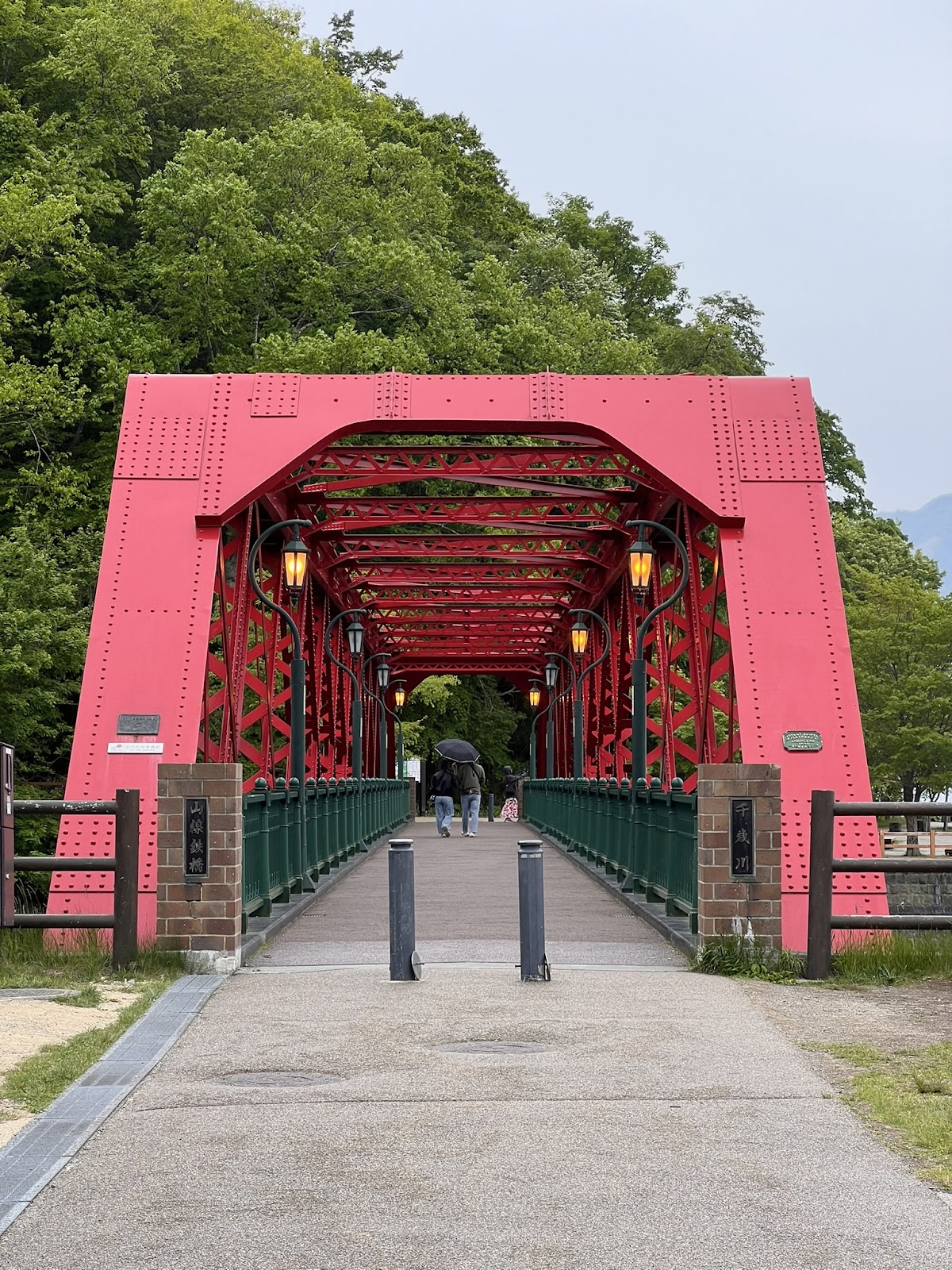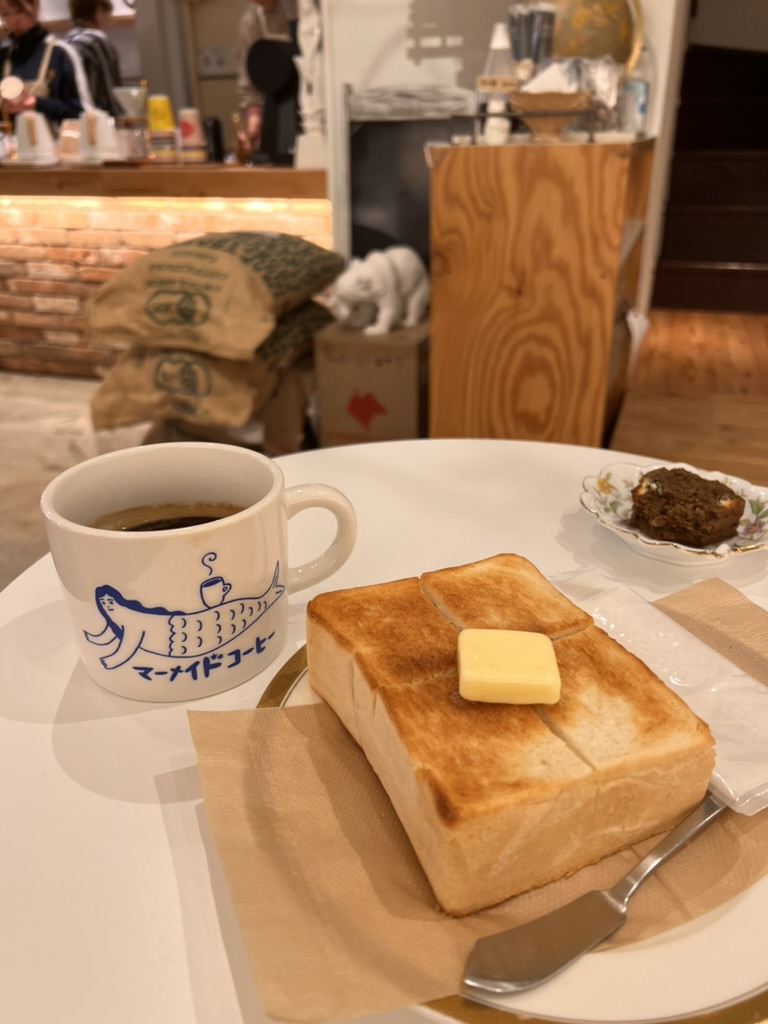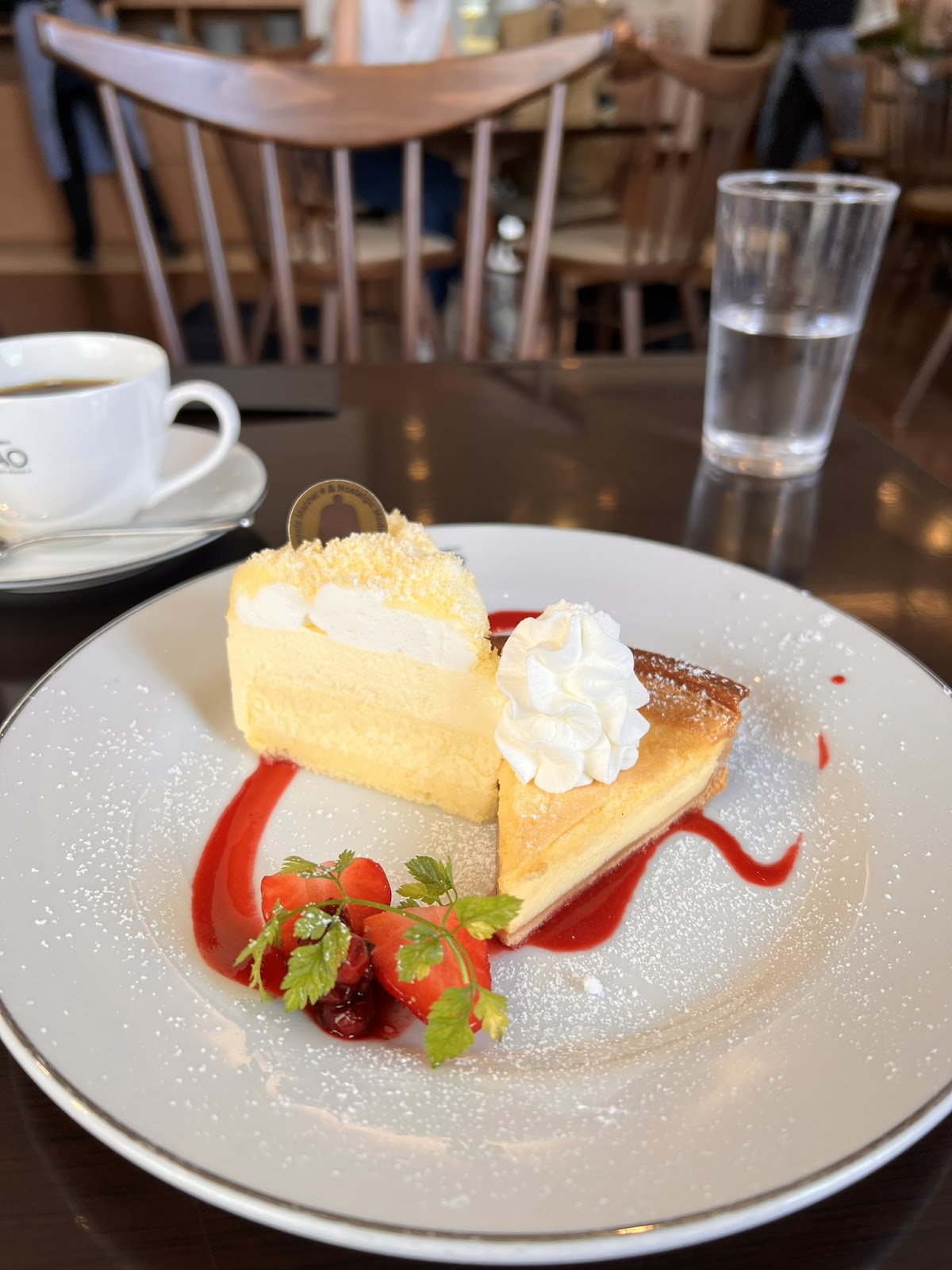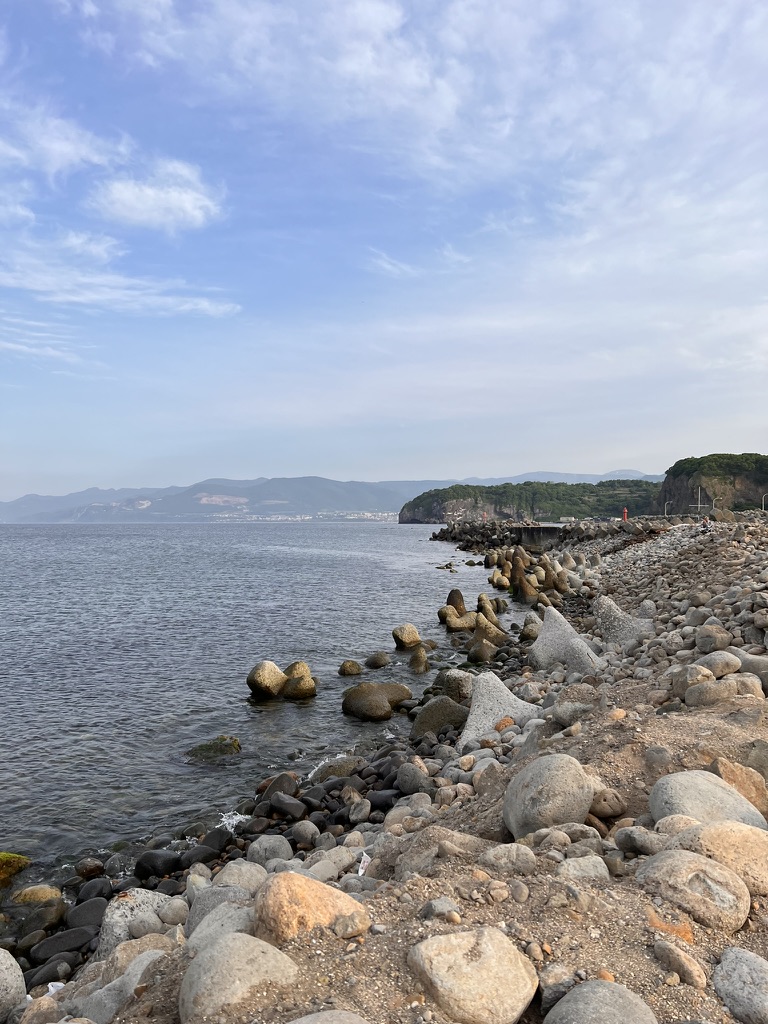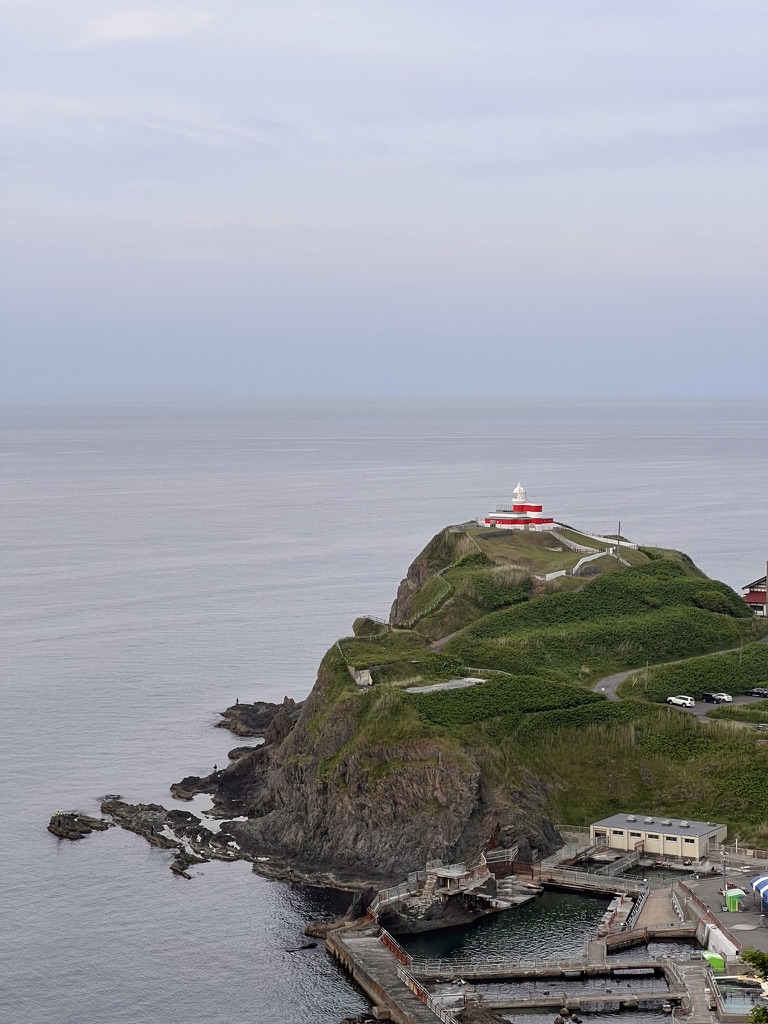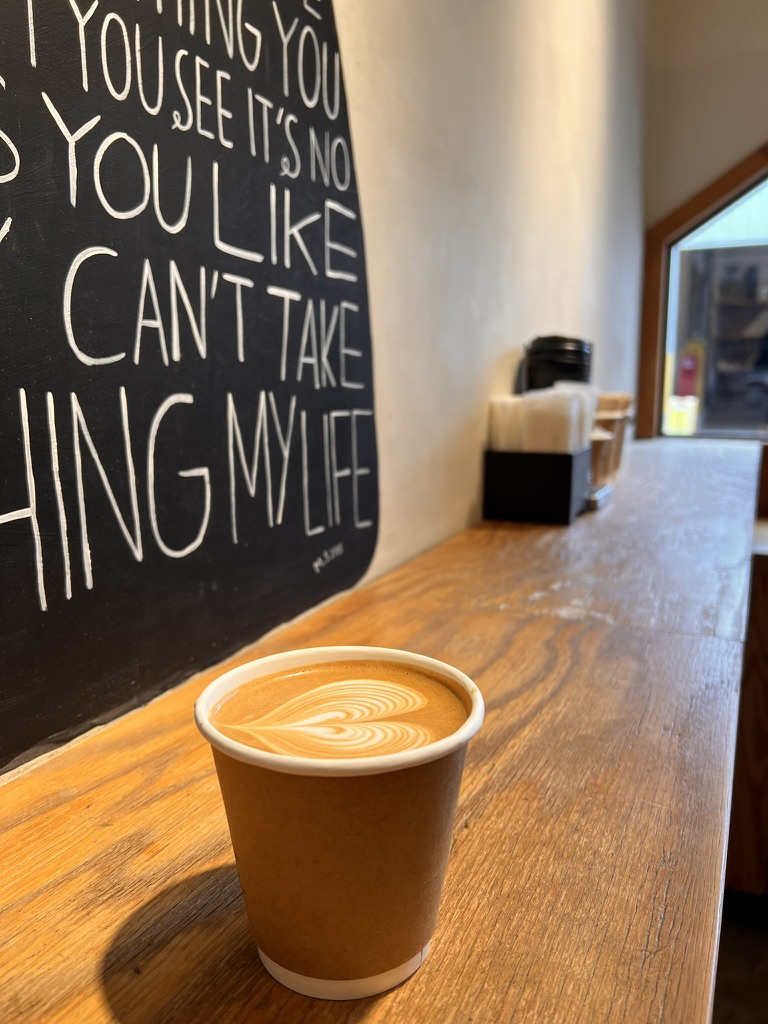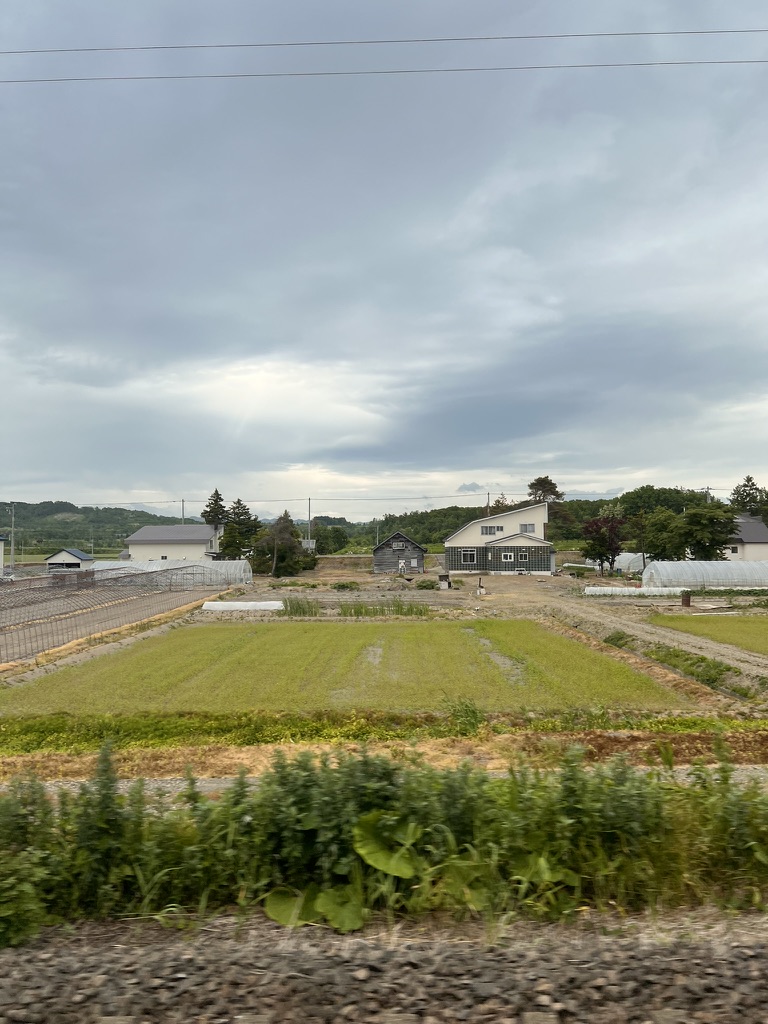Japan is one of those few places in the world where people care, just maybe not about you specifically. They are friendly, but not really your friends.
As an outsider, you can never truly integrate, but it makes a great place to travel, especially solo. Having already visited famous places like Tokyo, Kyoto, and Osaka, I decided to check out Hokkaido to mark the end of my 30th year on the planet. It would also be my first solo endeavour.
ANA (All Nippon Airways) has frequent deals from major cities in India and is a great airline to travel with (although the leg space on the domestic flights is a bit lacking). The person at the BOM check-in counter (incorrectly) told me that I wouldn't need to collect and re-check-in my luggage at Narita, but I'm glad I double-checked online.
I had a long layover at Narita, during which I picked up a WiFi box[1] and spent most of my time in a cafe, but there are dozens of restaurants with more traditional food you can try. A nice viewport too.

The flight landed late in Sapporo and I took the airport bus to Odori park[2]. I was not prepared for how cold it was once I stepped outside the terminal.
My hotel was right next to Sapporo TV tower, which does look bigger in pictures than in real life.
As soon as I left the hotel I was greeted by an anime convention spanning the entire length of Odori Park. I really was in Japan.
I have a simple routine for vacations. After waking up—whenever that may be—the first objective is to get coffee (preferably trying out a new place each time). Then loiter until you get tired (and hungry) enough for lunch, followed by more sightseeing (to get hungry for dinner). The special Japanese addition is late-night Konbini visits for dessert (preferably trying out something new each time).
After walking around Sapporo University, I went to the JR tower observatory, one of the highest viewpoints in the city to catch the sunset, and stuck around for quite a while until dinner time.
I took part in a bus tour on the second day, and while it was a bit rushed, there's no way I could cover as much with just public transport in a single day. The tour covered volcanic formations (some as recent as 1945!) and surrounding lakes.
The weather was less than ideal— overcast and eventually rainy, reminiscent of the previous times I've had such day trips in Japan (Hakone and Kawaguchiko, where I also ended up cancelling plans to hike Mt. Fuji due to rain)
At the end of the day, I had one of the best cold brews ever at Marumi Coffee, where I ended up going a few more times during the rest of the trip. The rest of the evening was spent around the flashy Susukino area.
Given there was more rain scheduled for the next day, I decided to spend it in the city. Trying out more cafes and lining up in the rain for an hour and a half at a famous ramen shop. The ramen was good, but too filling—should have skipped the rice and gotten a half portion!
On the way back, I came across a cafe run by Sho Tanaka, a barista champion of latte art, who was kind enough to entertain my attempts to converse in broken Japanese. I returned to Marumi again for more coffee. I'm sure I did something worthwhile between my coffee shop visits, but I can't remember.
More coffee to start the next day, before boarding a bus to Yoichi, home of Nikka. I had signed up for their
free tour a few weeks before the trip, and it was another interesting experience marred by rainy weather. The tour was in Japanese, and although they have companion apps with english recordings, the network coverage there was not good enough to get those downloaded in time. Google's live translate helped me out a bit. I am no whisky connoisseur, but the
founder's story is truly fascinating. Masataka Taketsuru learned the craft in Scotland and came back to Japan to make his mark. There's also a whole museum dedicated to his journey and the evolution of Nikka.
It was late evening by the time I got back to Sapporo, and I discovered a place of indulgence right next to the hotel. A black coffee was the only sugarless item in my order.
Next morning, I strategically picked a coffee shop far enough that I would also be hungry enough to eat by the time I got there. Then, was my first visit to an outlet of Japan's largest discount store, which I somehow missed completely on my last trip. After some shopping, I went to try out a Sapporo specialty,
Soup Curry at Suage+. They offered varying levels of spicy-ness and I think I could have gone spicier.
After picking up FF7 Rebirth at a
used game store, was a visit to the garden surrounding the Former Hokkaido Government Office. It was a serene park right in the middle of the city, serene until I was attacked and chased away by a crow. He made a few low overhead passes before I felt claws on the back of my head, — and then I ran. I felt better after having coffee from a siphon brewer (for the first time) at
ONIYANMA (a recommendation from the barista champion). Better, but not good enough, and that called for more coffee and donuts.
More coffee and carbs the next day at Mermaid, which was very nice and is deserving of its outrageously high rating. The staff do come out to say goodbye to everyone, and one of them even stuck around waving until I was almost out of sight. Next up was Moerenuma Park, a huge sprawl of green, where I loitered on a bicycle for the entirety of the rental duration (returning it with just 5 minutes to spare). There was a glass house with a museum, and a small hill with a view of the city. It also served as a fitness check (if you can make it to the top without stopping to catch your breath). There was more coffee (not pictured)
The rest of the evening was spent at Kalahana and Bearfoot, where I chatted with a senior Dutch (after he shocked a local by telling him how many paid leaves he gets in a year). He had been cycling (!) throughout Japan for the last few months, camping in most places. Another was a local techie, from whom I learned about otaku culture and the underground idol scene; and gained some insight into the
despair among the youth. This also (more than) fulfilled my socialising quota for the entirety of the trip.
Yosakoi Soran Festival was one of the first things I encountered the next day. An epic dance-off spread throughout the city, dancers in full attire, with roads blocked off specially for them—serious stuff. A long train ride later, I was in Otaru, a port city. I checked out the Music Box Museum and ate at LeTAO (which had a bit of wait time).
The main streets of Otaru were a bit too commercialised for my liking, so I went a bit further out, past the canal, and took a bus up to Hiyoriyama Lighthouse. I got off a stop (or two) earlier to take a walk near the fishing harbour—where I met a few chunky bois, a diamond princess, and a ship at sea. It was peaceful out here, sitting by the sea. The lighthouse was just up the road, with very few people around.
Further up the road was another observation area, and at this point I started to feel the lack of personal transport, not just because of the walk, but having to rush in order to not miss the last bus back to the city. Most people out here had cars—so they could wait a bit longer as the sun went down. I walked back down the hill with a few minutes to spare at the bus stop.
Next day was coffee, shopping for items and a duffel bag to fit all those items, lunch at a cozy restaurant, and catching a train to the next destination. I had collected a 10-day rail pass just a day or two before this journey, so that it would be also valid when I had to come back to Sapporo (for the return flight).
This was the last day in Sapporo
[3], before moving on to the second part of the trip, a place in the countryside, half an hour from Asahikawa.
Hokkaido has great public transport (like most of Japan), but if you are in a group, or if you can rent a car, it opens up a lot more destinations. The rail pass let me go almost anywhere, but nothing beats a car for the last mile stuff, plus you are not bound to a timetable.
Since I didn't have a car and train frequency drops considerably as you go further from the city, I could not just wake up whenever I wanted to in the second part of the trip.
It took me almost 8 months (of procrastination) to write this out, so the second part should be out anywhere before the end of the year. Stay tuned!
1. I also returned it at the same terminal on my way back, but you can pickup and drop it across several airports). Best thing about it is that it doesn't kill your phone battery as quick if you were using mobile data.
2. Google maps may not show destination names in English for this ride, so it took me a while to figure which exact bus to take.
3. For now, we will be back to Sapporo in Part 2







